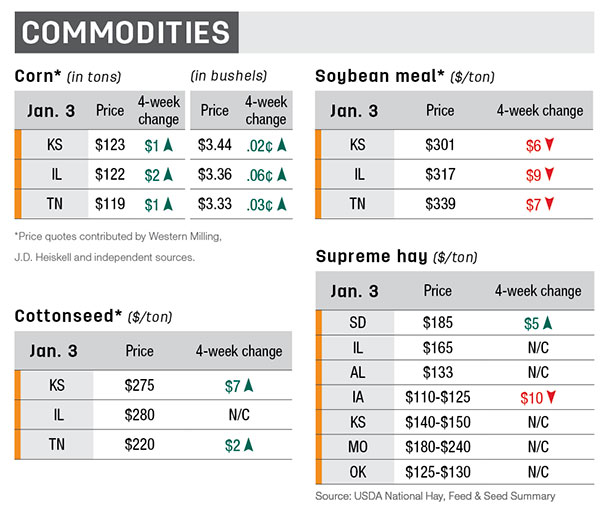Work with your extension office and nutritionist to make sure energy, protein and micronutrients are sufficiently supplied. Protein without sufficient energy will not maintain appropriate body condition, particularly for those in early lactation. Cows receiving poor hay and protein tubes or tanks will still lose substantial condition unless energy is added to the diet.
Cows in drought areas could easily have been one body condition score (BCS) lower than normal before the winter began.
Spring calving
A cow’s needs increase by 50 percent after calving. It is imperative that 2-year and 3-year-old lactating cows be separated for targeted and more efficient feeding. Young cows with more than the last rib showing or less than BCS 4 are at greater risk of not rebreeding on time.
It is recommended by many to tag calves at birth. If cows or calves are easily excited or easily agitated, it can wait until the pre-weaning vaccination, particularly in commercial herds.
It is still ideal to write down the calving date for each cow and the calves’ sex classification. Operations that do perform tagging shortly after birth should consider castration at this time. Castration prior to 3 months of age is advantageous. Calves castrated at or after weaning exhibit increased morbidity and mortality compared to those castrated less than 3 months of age.

The common thought of the testosterone advantage of bull calves weighing more is negligible, as substantial testosterone production does not begin until closer to puberty. Bulls should be in a BCS of 5 to 6 and already fertility tested 30 days prior to turnout.
Fall calving
Check your bulls for body condition and stamina. If heavy estrus activity persists, have a veterinarian ultrasound or pull blood to test for the pregnancy-specific protein. Many labs are performing blood pregnancy testing. Before drawing samples and testing, the cows should be noted as 28 days post-breeding and 90 days post-calving.
Find a bovine pregnancy testing lab to obtain the proper submission forms. They may also be able to offer sterile collection tubes and syringes. Sampling usually consists of at least 2 cc of blood collected from the tail. ![]()

-
Jason Duggin
- Beef Extension Specialist
- University of Georgia
- Email Jason Duggin








